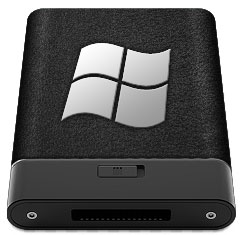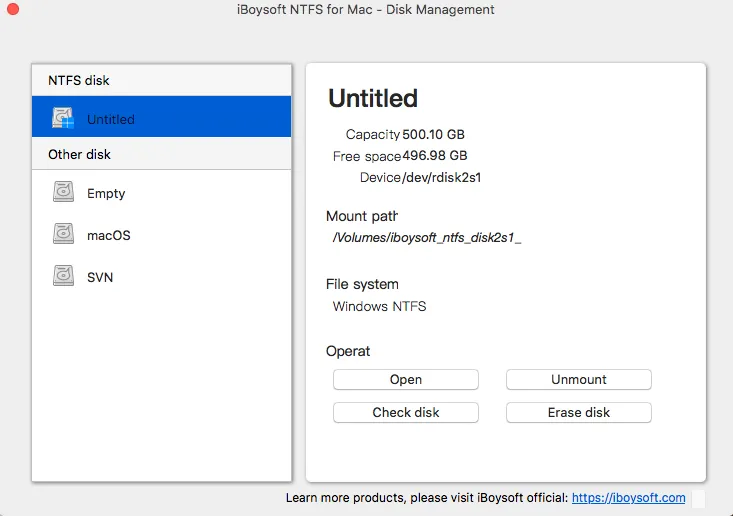- Ntfs For Mac Os Mojave Command Line System
- Ntfs For Mac Os Mojave Command Line Map
- Format Ntfs Command Line
Mar 17, 2017 2. Hold down “Command + S” while your computer restarts. You can release the keys once you see white text start to appear on the startup screen. Some white text will scroll by quickly. When it stops, you’ll see a command prompt at the bottom of the screen that says root#. Dec 06, 2019 I need to create a bootable USB drive containing the macOS 10.13 High Sierra installer because High Sierra is the last macOS version supported by the 2011 Macbook Pro. MacOS High Sierra Not Found. I go to my Mac mini running macOS 10.14 Mojave to download macOS High Sierra like normal. Sep 27, 2016 Advanced Mac users may wish to allow a third option, which is the ability to open and allow apps downloaded from anywhere in MacOS Catalina, macOS Sierra, macOS High Sierra, and MacOS Mojave. To be clear, the “Allow applications downloaded from anywhere” option is hidden by default in Gatekeeper for macOS from Sierra onward.
Mac system is very secure than other desktop OS. And something different than other OS as well. Usually, We got so many new features along with ups and downs on every macOS update. However, with this macOS update, NTFS drives aren’t compatible with Mac, Drive not showing after use on windows. You can use the NTFS drive but not entirely as you can only read the NTFS drive, but you cannot perform write operation like creating or editing documents, Copy Some Documents or Folders. This leads to inconvenience for Mac users. You need to take this action in such cases like USB drive used on Windows, But Your Mac Didn’t show Drive, Drive won’t open to use.
Mar 15, 2018 The NTFS partition was probably automatically mounted by your Mac, so you’ll need to unmount it first. Run the following command, replacing /dev/disk2s1 with the device name of your NTFS partition. Sudo umount /dev/disk2s1. To mount the drive, run the following command, replacing /dev/disk2s1 with the device name of your NTFS partition. In the Terminal window, run the following command line: brew install homebrew/fuse/ntfs-3g. Step 5: Disable SIP (System Integrity Protection). Restart your Mac and press Command + R while it’s booting. Open Terminal from the Utilities menu in Recovery Mode. Type in the command line and hit Enter: csrutil disable. The command line interface is an alternate method of interacting with macOS and Mac OS X, relying on text based command entry to execute commands and perform tasks. It is accessed on the Mac by using the Terminal application.
Eventually, there are various methods available which can be useful to read and write on NTFS drive. Yes, you can write on NTFS drive on your latest macOS Mojave. After following the guide, you can quickly create new files which can be stored in the NTFS drive along with editing, deleting, copying and much more functions will be supported on NTFS drive. So let’s get started with how to write on NTFS on Mac on macOS Catalina and Earlier.
we are happy to help you, submit this Form, if your solution is not covered in this article.
Convert your NTFS Hard Drive to supported Mac Drive

Part 1: How to write to NTFS External Hard Drive on macOS Mojave
- Step #1: Plug the USB drive in Windows and then rename it and give a one-word name to that drive. Eject the USB by the clicking on “Safely Remove Hardware” icon on the bottom of the screen.
- Step #2: Plug the same drive in Mac. Start up the Mac which contains macOS Mojave.
- Step #3: Open “Spotlight” by pressing command + space. Write Terminal and hit enter to open Terminal. Else you can also open the Terminal from Applications > Utilities > Terminal.
- Step #4: Type the below command in Terminal and hit enter.

sudo nano /etc/fstab
- Step #5: Now, again type the following code. Keep note that Replaces the NAME with the USB drive name.
LABEL=NAME none ntfs rw,auto,nobrowse
Ntfs For Mac Os Mojave Command Line System
- Step #6: Press “CTRL+O” which will save the file. Hit “Enter” and to close the terminal press the “CTRL+X.”
- Step #7: Remove the NTFS (USB Drive) and reconnect it.
- Step #8: Now we will access it, Launch “Finder” and click on “Go” and then open “Go to folder.”
- Step #9: Type “/volumes” and proceed by clicking on “GO.”
- Step #10: Now you will see NFTS drive, and if you want to make changes then you can manipulate it in your way.
To undo this operation, you have to remove the line that we had added to the nano editor.
Ntfs For Mac Os Mojave Command Line Map
Part 2: Change the Drive Format to exFAT
EXFAT format isn’t compatible with macOS Mojave, so may face problems while accessing the files on NTFS drive. The best way to fix this issue is to convert the NTFS drive to exFAT format so that you can easily access any file on both platforms without any interruption. You can change the form right from the macOS. Here’s how to change the drive format to exFAT in macOS Mojave.
- Step #1: Open the “Disk Utility” from the Spotlight.
- Step #2: You have to erase the drive before changing the format of any drive. Select the drive and click on “Erase.”
- Step #3: Next, select the “EXFAT,” and then click “Erase.” Within minutes your drive will be ready with the new exFAT format.
Suggestions
Format Ntfs Command Line
This tutorial will help in using NTFS Drive on Mac. But you have an alternate option that easy and fixes the problem like this all the time for future use. Dual OS supported. Drives are available in the market. I would like to suggest Seagate Backup Drive.
Premium Support is Free Now
We are happy to help you! Follow the next Step if Your Solution is not in this article, Submit this form without Sign Up, We will revert back to you via Personal Mail. In Form, Please Use the Description field to Mention our reference Webpage URL which you visited and Describe your problem in detail if possible. We covered your iPhone 11 Pro, iPhone 11 Pro Max, iPhone 11, iPhone 8(Plus), iPhone 7(Plus), iPhone 6S(Plus), iPhone 6(Plus), iPhone SE, SE 2(2020), iPhone 5S, iPhone 5, iPad All Generation, iPad Pro All Models, MacOS Catalina or Earlier MacOS for iMac, Mac Mini, MacBook Pro, WatchOS 6 & Earlier on Apple Watch 5/4/3/2/1, Apple TV. You can also mention iOS/iPadOS/MacOS. To be Continued...
To use this drive on different System: MacOS and Mojave you don’t need to reformat.